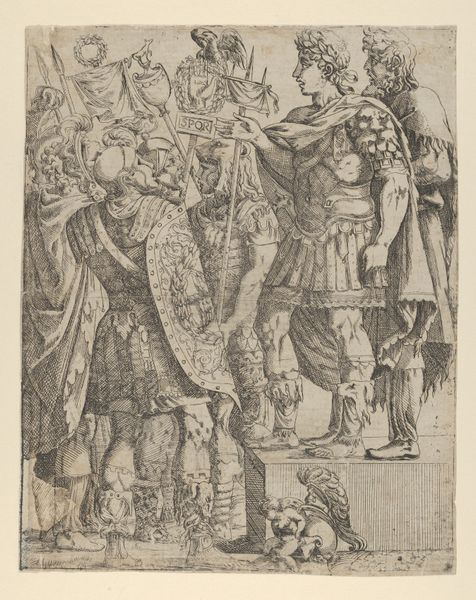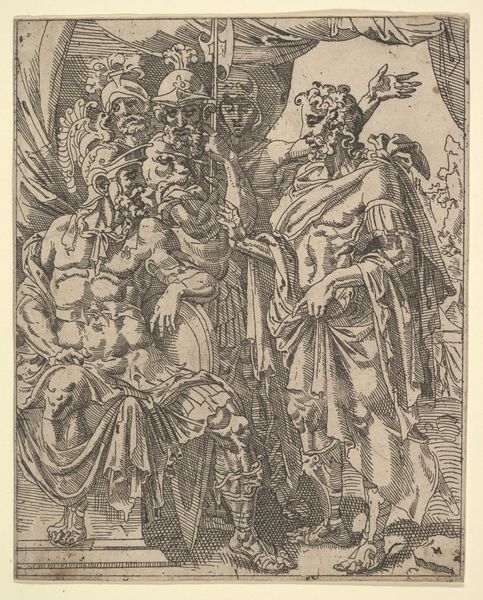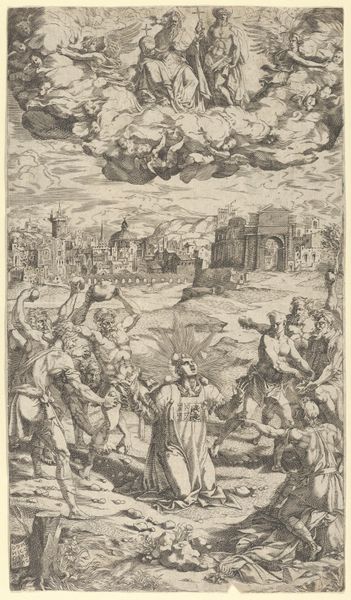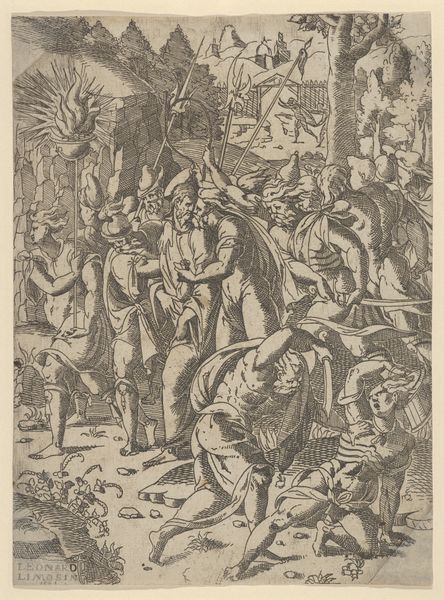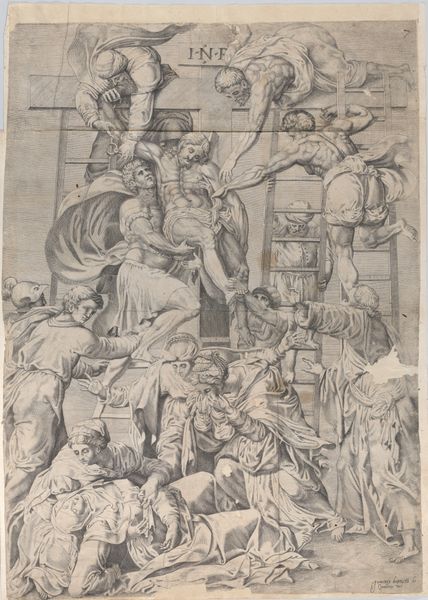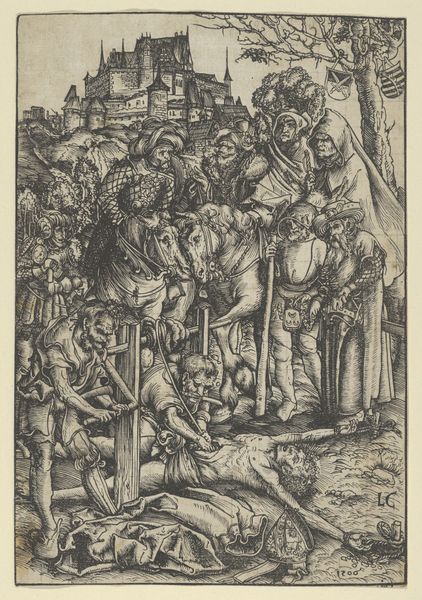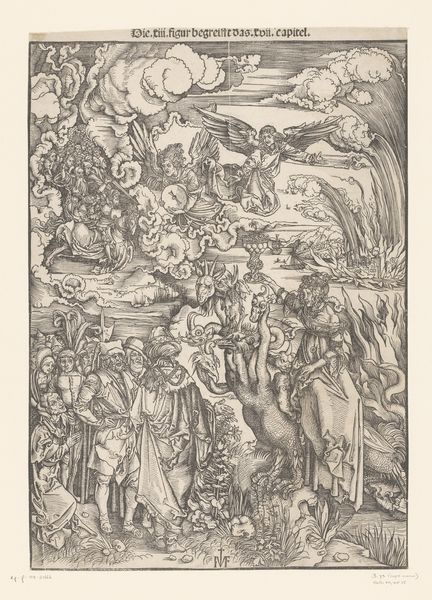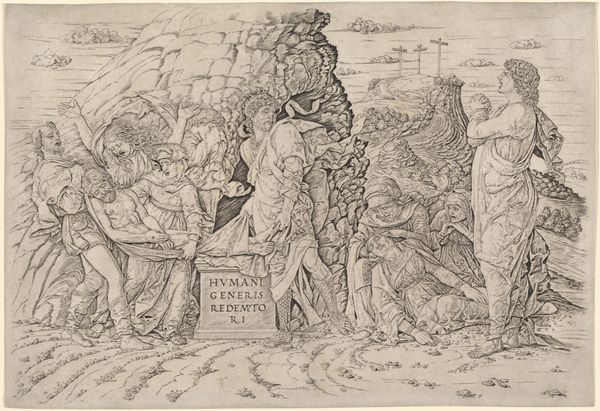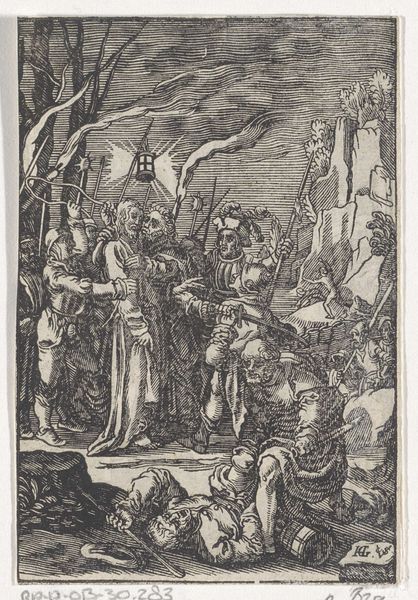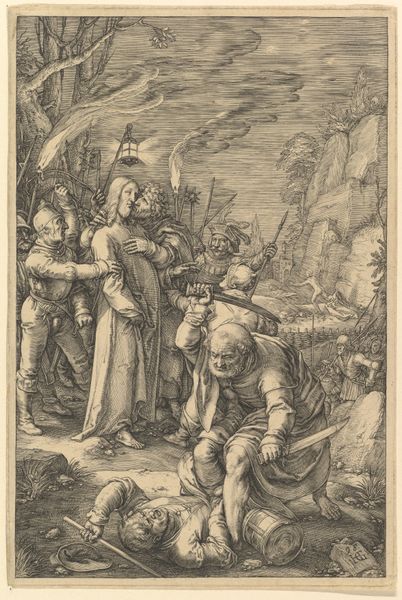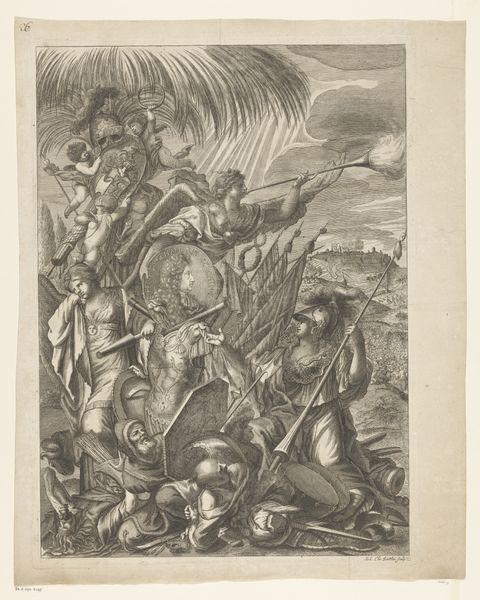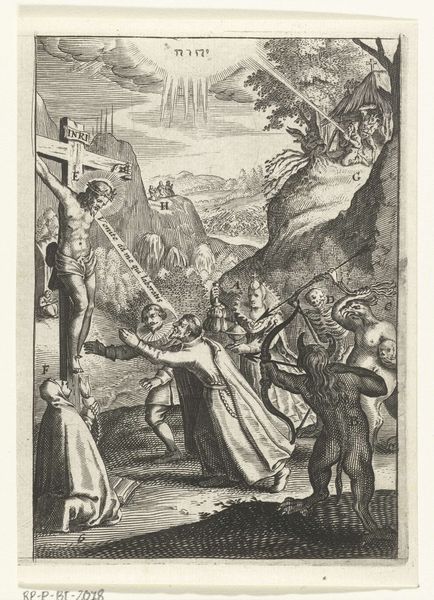
drawing, print, engraving
#
drawing
#
baroque
# print
#
figuration
#
line
#
history-painting
#
engraving
Dimensions: Sheet (Trimmed): 8 11/16 × 6 7/16 in. (22 × 16.3 cm)
Copyright: Public Domain
Curator: This is an engraving dating from between 1575 and 1645, portraying "Alexander the Great meeting Diogenes." It currently resides at the Metropolitan Museum of Art. Editor: What strikes me first is the sharp contrast between the refined figures surrounding Alexander and the reclined, almost animalistic Diogenes. The line work, though intricate, creates a stark division. Curator: And that division speaks to a larger point. Look at the historical context: an emperor, representing power and empire, encounters a philosopher known for rejecting societal norms. What does this encounter reveal about attitudes towards wealth, poverty, and philosophy during this period? What materials were readily accessible at the time to produce such prints for distribution and debate? Editor: Let's not disregard the visual cues that reinforce the theme of austerity versus opulence. Diogenes’ exposed torso is set against Alexander’s layered garments, further dividing the subjects into a state of want against aristocratic dress. Look at how Alexander's robe is carefully placed; the texture achieved through repetitive lines conveys weight and expense. The engraving focuses heavily on surface and texture to create this contrast. Curator: The act of producing a print, often duplicated and circulated widely, provided a way for historical narratives and moral lessons to reach wider audiences, challenging hierarchies of access. The economics of art creation and distribution need interrogation. How does making an artwork readily available speak to the culture that is represented in it? Editor: I’d argue that making prints makes artworks democratically available, but that should not blind us from understanding how the artistry shapes our reading of that specific culture through the rendering of form. Consider the architecture in the background, almost sketched in—yet its imposing nature gives scale to Alexander’s authority and Diogenes’ perceived isolation. It uses form to give shape to authority and rejection. Curator: But where do the skills and knowledge for architecture in the backdrop derive? Whose labor constructed this imposing backdrop and the symbolic capital it implies? What was the social class of those who built these structures and whose knowledge and experiences were reflected, or absent, in their design and construction? Editor: That’s fair; all aspects must be examined. Despite our divergent points of focus, there is room to agree about its visual impact and layered symbolic meaning—which invites us to look deeper. Curator: Precisely. There is much to examine here, from distribution to access to labor, to unpack social strata and biases—material conditions reflected by both patronage and production.
Comments
No comments
Be the first to comment and join the conversation on the ultimate creative platform.
